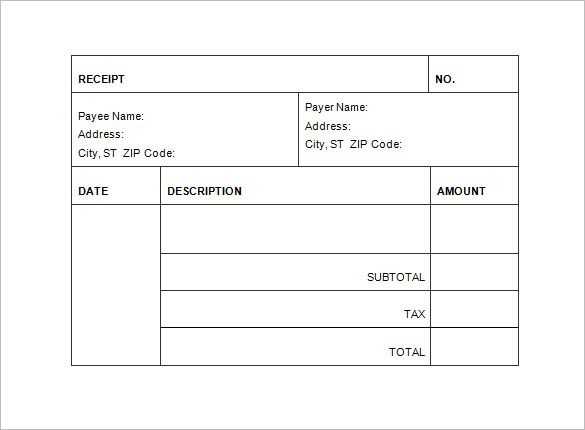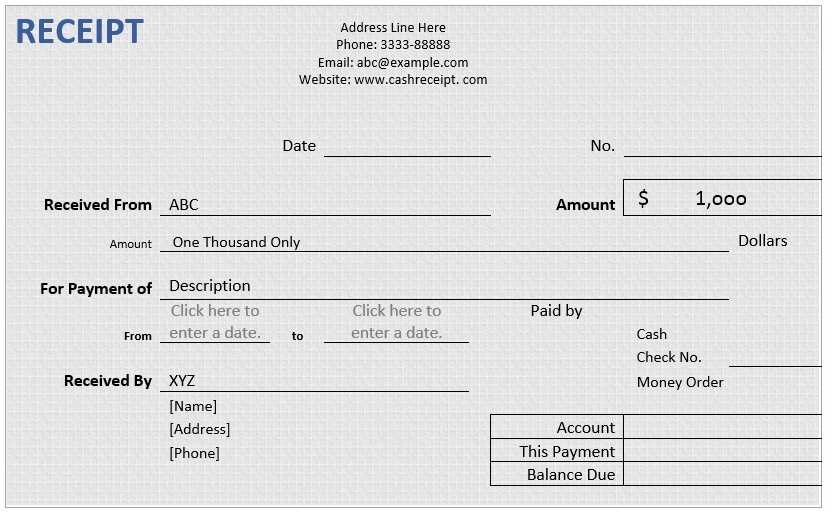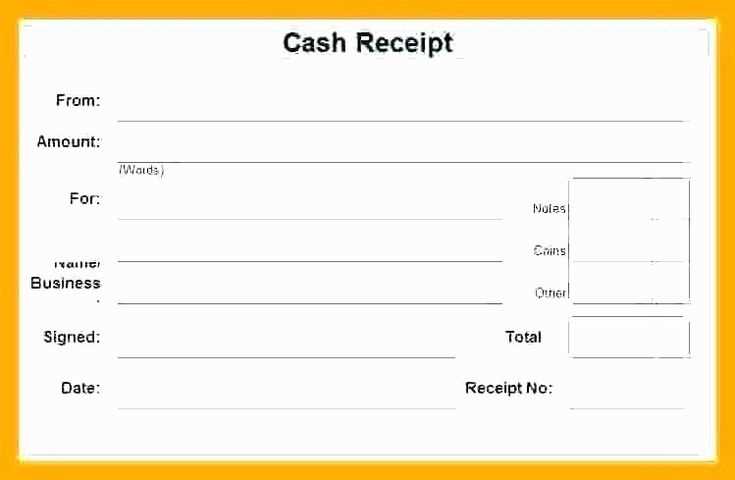
To create a template receipt, focus on simplicity and clarity. A receipt template should capture all the necessary details of a transaction in an easily readable format. Start by including these key elements:
Key Elements of a Template Receipt
- Transaction Date: Include the date of the transaction to provide a timestamp for both parties.
- Receipt Number: Assign a unique identifier for each receipt to track purchases.
- Seller Information: List the seller’s name, address, and contact details for reference.
- Buyer Information: Collect the buyer’s name and contact information (if applicable).
- Items Purchased: Provide a detailed list of items, including descriptions, quantities, and prices.
- Total Amount: Sum up all costs, including taxes and discounts, if applicable.
- Payment Method: Specify whether the transaction was made by cash, credit, or another method.
Layout and Design Tips
A clean and organized layout enhances readability. Use a structured format, placing information in clearly separated sections. This helps to quickly locate specific details like the total amount or transaction date. The font size should be legible and consistent, and avoid using too many colors or distracting elements.
Sample Template
Receipt Number: 12345 Date: February 8, 2025 Seller Information: Name: ABC Store Address: 123 Main St, City, Country Phone: 123-456-7890 Buyer Information: Name: John Doe Phone: 987-654-3210 Items Purchased: 1. Item A - 2 x $10 = $20 2. Item B - 1 x $5 = $5 Subtotal: $25 Tax (5%): $1.25 Total: $26.25 Payment Method: Credit Card
Adjust the template based on specific needs. For example, you might add an additional field for discounts, shipping charges, or return policies. Ensure the template remains versatile for a variety of business transactions.
Best Practices for Receipt Templates
- Consistency: Maintain uniformity across all receipts for a professional appearance.
- Clarity: Avoid jargon or ambiguous terms. Use simple language to describe the items or services.
- Legal Requirements: Make sure to include any required tax or regulatory information depending on the country or industry.
By following these guidelines, you can create an efficient, clear, and professional receipt template that benefits both the buyer and the seller.
Template Receipt: Practical Guide
Understanding the Basics of Template Creation
Choosing the Right Format for Your Receipt
How to Include Necessary Information in Your Template
Customizing Receipts for Different Business Needs
Common Mistakes to Avoid When Designing a Receipt Template
Legal Considerations for Receipts in Various Jurisdictions
Start with a simple layout for your receipt template. The layout should clearly separate sections such as business details, transaction information, and footer notes. This allows for easy comprehension and quick identification of important details.
Choosing the Right Format for Your Receipt
Select a format that aligns with your business needs and is compatible with the tools you use. For printed receipts, ensure the layout fits within standard paper sizes, like A4 or thermal printer formats. Digital receipts can be designed to include clickable links, for example, directing customers to your website or support.
How to Include Necessary Information in Your Template

Include the following critical elements in your receipt template: business name, address, and contact details; transaction date and time; list of items purchased or services rendered; total amount; taxes applied; payment method. Ensure each field is distinct and readable for your customers. Consider adding a receipt number for easy tracking.
For services, include the type of service, duration, and any specific charges or discounts. Don’t forget to provide space for the customer’s name or company if necessary. This helps personalize the document and builds trust with clients.
Customizing Receipts for Different Business Needs
Adapt your receipt template to suit your business type. For retail businesses, emphasize itemized lists and highlight pricing breakdowns. For service-based businesses, focus on hourly rates, service details, and any taxes applied. You can add promotional codes or loyalty program information for businesses aiming to encourage repeat purchases.
Common Mistakes to Avoid When Designing a Receipt Template

Avoid clutter. Too much information in a small space makes the receipt hard to read and less professional. Don’t forget to format numbers clearly, especially the amounts. Confusing currency symbols or improperly placed decimal points can lead to misunderstandings. Always test your receipt template with different devices and printers to ensure compatibility.
Legal Considerations for Receipts in Various Jurisdictions

Check local regulations regarding receipt requirements. In some regions, receipts must include specific tax information, like VAT numbers or business registration numbers. Certain jurisdictions may require receipts for all transactions, even small ones, to ensure proper record-keeping. Keep up-to-date with these regulations to avoid compliance issues.


